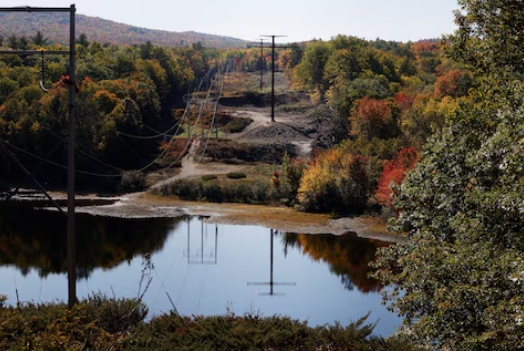
Newly installed poles for transmission lines for the New England Clean Energy Connect project (also known as the Clean Energy Corridor), which will bring hydroelectric power to the New England power grid, stand next to existing power lines in Moscow, Maine, U.S., October 7, 2021.
The U.S. power grid is undergoing significant changes due to the growing adoption of renewable energy sources, such as solar, and the electrification of sectors like transportation and heating. These shifts are altering traditional patterns of electricity supply and demand. In New England, the record low marks the third consecutive year of declining power demand, reflecting the region’s evolving energy landscape.
Throughout April 20, power usage fluctuated significantly. Demand hit its lowest point in the afternoon, driven by peak rooftop solar generation of about 6,600 megawatts. As the sun set, solar output decreased, and homes and businesses drew more electricity from the grid, causing demand to more than double by evening. ISO New England noted: "The trend toward more 'duck curve' days, when demand is lowest in the afternoon instead of overnight, illustrates the region’s changing resource mix, and the role different types of resources play over the course of a day."
New England is also experiencing a long-term shift in consumption patterns. Historically, peak electricity demand occurred in the summer, but the region is moving toward winter peaks as more buildings adopt electric heat pumps. This transition highlights the increasing integration of energy-efficient technologies and renewable energy, which are reshaping how electricity is consumed and managed.
The record-low demand underscores the growing influence of renewable energy and changing consumption habits in the region. ISO New England’s data reflects a broader trend toward sustainability and energy diversification, as the grid adapts to new technologies and environmental considerations.